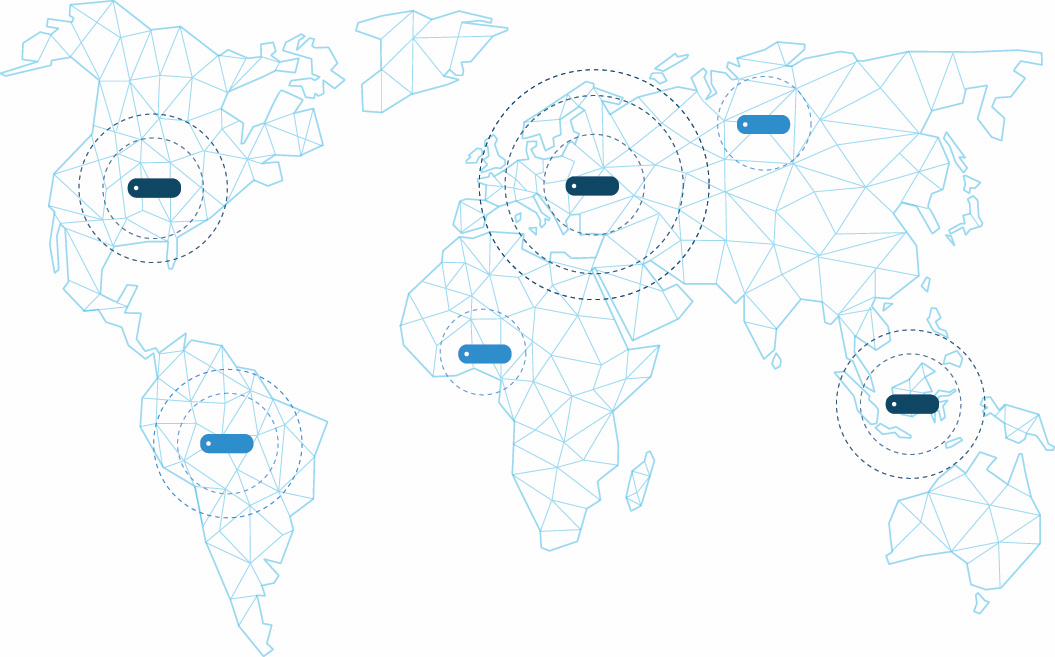Two Reasons Why CDNs Need to Adapt to the Changes in Video Distribution
A future-proof CDN should be natively designed to address openness, dynamicity, and elasticity altogether in a consistent manner

Driven by the ongoing migration of video content from broadcast to streaming technology—and by the appearance of numerous, successful streaming platforms—radical changes are impacting the nature of video delivery. CDN services, such as those offered by companies like Akamai, Amazon CloudFront, and Limelight, grow in terms of volume of content delivered but reach their limits when it comes to controlling the end-to-end video quality. As a result, an increasing number of content providers are seeking the support of network operators to guarantee the quality to the last mile.
Operator CDN technology must adapt accordingly. During the 2000s era, operators were at the center of the video delivery game. But the 2010s saw a shift to OTT video delivery, threatening to transform operators into mere “dumb pipes.” Ideally, the 2020s will be the decade that a collaborative approach between network owners and content providers happens. This implies that operator CDNs support several essential features: openness to third-party content, dynamicity of the optimization processes based on real-time analytics, and elasticity of deployment instances.
Evolution of Video Delivery Patterns
Two major and simultaneous changes in television threaten to shatter how video content is traditionally distributed: the migration of all broadcasts to streaming technology, and the surge of direct-to-consumer content distribution, whereby content owners directly sell their content via the open internet without going through a network service provider aggregation.
On the first point, it is important to note that, despite the extraordinary success of streaming, at the beginning of 2020 Nielsen reported that in the U.S 75% of the time spent by viewers in front of a TV was still on traditional linear channels distributed over legacy broadcast systems. This means that by the time all video content is available for streaming, the video traffic on IP networks will have quadrupled.
The situation is even worse since a network is dimensioned based on peaks, not on average traffic. Peaks are generated by popular live events, which are still almost exclusively distributed via broadcast today. It is hard to imagine the kind of peak that a football World Cup final would generate if it was only available through streaming services. Moreover, these popular events are the moments when QoE matters the most, and degraded service is simply unacceptable to viewers.
With this in mind, it is very probable that static operator CDNs, the predominant model today based on static deployments and configurations, won’t be sufficient to cope with these new kinds of constraints. Operator CDNs have to become context-adaptive and be able to dynamically steer the network resources based on actual usage.
On the issue of direct-to-consumer content distribution, there’s a consensus that the proportion of content provided directly by content owners will continue growing quickly at the expense of operators offering aggregated content. Most studios have launched their own streaming platform, and it is no mystery that studios want to invest in this mode of distribution in the future.
This trend is poised to accelerate the migration mentioned above, and it would limit any optimization on the network that only addresses operators’ aggregated content. For this reason, CDNs absolutely need to be open to third-party content.
Key Characteristics of a Future-Proof CDN
There are several features that make a CDN future-proof:
- Openness: Access to CDN optimization is no longer limited to the content managed by the network operator and can also now benefit the ever-growing number of external content providers. A future-proof CDN should be able to expose a set of abstract APIs, including SVA Open Caching, so that any third-party content can be individually managed and monitored thanks to a native, multi-tenant approach.
- Dynamicity: Considering that video distribution versatility should not be limited to its elasticity aspect, a future-proof CDN should provide a full stack. This will not only allow the movement of instances around the network but also constant optimization of their configuration at the application level. Relying on real-time analytics collected at every tier of the system and on A/B testing, features should be dynamically added and fine-tuned through a centralized and operation-friendly user interface.
- Elasticity: Based on the 3GPP multi-access edge computing (MEC) standard, all CDN instances should be deployed as orchestrated containers, in PoPs or at the edge for better granularity and deep caching, to mobilize infrastructure resources where they are most needed in the network.
These principles apply to all video distribution components, including caching and advanced concepts such as server-side stream selection control or multicast-ABR quality pipes.
Beyond the benefits offered by each of these aspects individually, what makes this type of solution particularly well-suited to CDN expectations in the near future is the combination and interactions between the three capabilities. Globally, the more content originates from a wider number of providers, each with their own constraints and audience, the more important it is to segment and adapt distribution with full virtualization and video process dynamicity.

A Three-Level Approach
A future-proof CDN should be natively designed to address openness, dynamicity, and elasticity altogether in a consistent manner. This implies that the distribution system adapts to its environment at three logical levels:
- Level 1: automatic deployment of instances while seamlessly allocating the corresponding video sessions.
- Level 2: real-time optimization of the video delivery process based on content usage analytics and configurable business rules.
- Level 3: processes independently available for each content provider in a way that keeps a clear segmentation between them while arbitrating their concurrent usage of the delivery network.
Moreover, these three different levels have to interact between each other. For example, the addition of new content will typically generate the creation of a new tenant in the system, the creation and deployment of dedicated instances at different places of the network, as well as a usage-specific configuration of the distribution processes. Managing an increase in content popularity also typically impacts both deployment and video processes levels, which have to work in close coordination.
Finally, on the commercial side, this type of solution forges a new relationship between internet service providers (ISPs) and content owners, which is an outstanding opportunity for both parties. It essentially enables network service providers to simultaneously control external content, corresponding usage and costs while securing a guaranteed level of quality, which is also a goal that content owners have long pursued.
For those reasons, an open, dynamic and elastic CDN is a win-win solution for ISPs and content owners.
Get the TV Tech Newsletter
The professional video industry's #1 source for news, trends and product and tech information. Sign up below.

